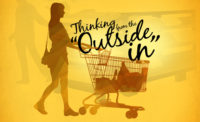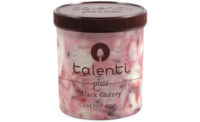Designing for the Shopper

Six principles to drive effective packaging.
We are often asked for the “do’s and don’ts” of effective packaging, based on our experience across thousands of consumer research studies. Although this may appear to be a simple question, it is actually quite difficult to generalize about “what works” across countries, retail channels and product categories.We often find that breaking the rules-with revolutionary designs that diverge from a category’s visual norms-is what creates differentiation and drives success. For example, Wrigley’s new “5” gum has been successful through black (and somewhat cryptic) packaging that contrasts greatly with the traditional, colorful packaging of the category.
While it’s not possible to reduce package design to a formula, our experience suggests that there are several core principles consistently linked to successful design, regardless of whether we’re studying hair care sachets in Indian kiosks or cereals in European hypermarkets. In this article, I’ll speak to these principles-and offer several examples of their application:
1. Design for Visibility
Package design should start with the realization that clutter is the universal reality of the shopping experience. Therefore, the first challenge for any packaging system is to break through that clutter to generate shoppers’ consideration. Our PRS Eye-Tracking studies suggest that shoppers never see two-thirds of the products on shelf, even when they are actively shopping a category.On a broader level, designing for visibility requires you to understand the merchandising environment in which your packaging appears, to recognize your limited control of how packages are actually presented-and design for the “worst case” scenario. The most common example is the fact that packages are often not stocked properly; we can’t assume that front panels will be facing forward, so packaging needs to incorporate branding on all panels.
What works? When it comes to visibility, the quick answer is contrast. It’s not a question of what people want to look at, but rather a matter of physiology-items that differentiate literally draw the eye. Certainly color blocking-the practice of “owning” a color on shelf, like a green “wall” of Fructis hair products-is a powerful strategy for creating visual contrast and brand recognition. We’ve found that it’s particularly important for new products or smaller brands with limited facings.
In addition to color, we’ve seen several other effective strategies for visibility, including the use of a strong brand mark or visual icon and the effective use of negative/white space. All of these strategies are evident on Kellogg’s Special K packaging. In a world of “screaming” packages, it is simplicity like this that creates contrast and draws attention and involvement.
2. Design for Shop-Ability
A second (and related) reality of the shopping experience is that people are overwhelmed by too many choices. In addition to creating confusion and frustration, we’ve seen that this overabundance of choice leads many shoppers to “default to the familiar”; that is, to buy their old brand rather than take the time to consider new choices. This phenomenon-and the challenge of retail visibility-might help explain why new product failure rates are so high.Designing for shop-ability goes beyond simply helping shoppers find “their product” quickly and accurately. It’s also important to ensure that shoppers can quickly and clearly understand relationships among products. While find-ability is certainly important to shoppers who know what they want, effective product differentiation-conveying the unique features or benefits of each product within a line-is actually what drives shoppers to “trade up” to higher-end products and/or make incremental purchases.
What works? To facilitate shop-ability, designers should think in terms of continuity, rather than differentiation. Specifically, it’s important to have a consistent layout of information across packages, so that shoppers can easily compare two packages (in terms of key features, benefits, usage occasions, etc.). When packages have different layouts, it’s simply more difficult to make these comparisons.
Similarly, a “build effect” (i.e., adding an extra bullet to describe a higher quality product) can be very effective in conveying different levels across a product portfolio. When one package has three claims and another has three very different claims, it can be challenging to understand their relationship.
Of course, people do tend to shop by color (i.e., “I buy the Tropicana with the blue cap”), so the effective and intuitive use of color-coding is also important, particularly in terms of conveying flavor/scent or implying quality level. We have consistently seen that partial color-coding (via caps, flags, etc.) can be just as effective as having packages fully color-coded (i.e., a yellow pack, a green pack, etc.). Thus, it is possible to both “own a color” (for retail visibility) with one hue and then use other hues to color-code effectively (to facilitate shopping).
It’s also important to note that, across studies, we’ve found that sub-brands (particularly more abstract options such as Plus, Total, Extra, etc.) often hinder shop-ability, by adding a layer of copy that doesn’t add useful information. Therefore, it’s important to ensure that sub-brands and product names speak to features/benefits.
3. Design for Differentiation (on a visceral level)
It’s also important to remember that packaging communication is primarily visual and that purchase decisions are often intuitive and emotional. In addition, because the competition is typically nearby on shelf, packaging is inherently comparative in nature. These factors make it critical for packaging to embody a key dimension on an immediate, intuitive level, without relying on copy or claims. In other words, your packaging needs to look more effective, more refreshing, more healthy, more authentic, or perhaps more high-tech than the competition at first glance. If your packaging does not look and feel appetizing, your claims will not convince people otherwise.What works? Across regions, packaging structure (particularly unique shapes and delivery systems) can be a very powerful weapon for differentiation. In fact, while package color and logo often facilitate brand visibility and recognition, a unique shape can send a strong implied brand or product message. For example, 3M’s introduction of plastic packaging for Nexcare bandages sent a strong message of innovation and category leadership (relative to Band-Aid), which drove double-digit sales gains.
Of course, packaging graphics can also be used to drive differentiation if they represent a significant break from category norms, as in Pepsi’s recent adoption of rotating packaging graphics through its Choreography campaign. However, it’s also important to keep the category’s ultimate purpose/end-benefit in mind: If you are designing for efficacy-driven categories like kitty litter or dishwashing detergent, the packaging still has to look effective!
4. Design for a Single Clear Message
When shoppers pick up a package, they typically spend very little time deciding if it should head into the shopping cart. For this reason, we’ve nearly always found that “less is more” in terms of packaging copy, and that it’s best to highlight a single clear message or claim.In fact, PRS Eye-Tracking studies show that in the five seconds typically spent examining a package, shoppers normally take in only three or four design elements (usually the branding, the main visual, a product descriptor-and perhaps one claim). In addition, we’ve seen that adding copy (such as an extra claim) does not consistently lead to longer viewing time. Therefore, if a package is cluttered with many claims or design elements, these elements will simply fight for attention – and no single message will consistently come across.
What works? For package messaging, it’s simplicity. Typically, the key to simplicity lies in identifying a single strong “point-of-difference” message and ensuring that secondary claims and/or product information fall outside the primary package viewing flow. It’s also important to combine design elements when possible, by ensuring that necessary elements (such as the brand logo or product name) also convey key features and benefits. The effective use of visual icons can also promote simplicity, by reducing copy, particularly on multi-lingual packages.
However, it is important to avoid crossing the line from simple to stark or sterile. We’ve frequently found that very sparse white packaging can be polarizing, as it can be perceived as generic. This is one area in which the prevailing design aesthetic varies widely by region, as Europeans tend to associate simplicity with sophistication, while Asians favor busier packaging.
5. Design to Drive Consumption
Once packaging makes it home, its shape and structure play a significant role in driving functionality (ease of holding, dispensing, etc.), satisfaction and re-purchase. What’s less obvious and equally important, however, is the impact of packaging in driving consumption rates. Specifically, we’ve seen that where a product is stored in the home (in the refrigerator vs. in the pantry, for instance) has a direct impact on how frequently it is consumed. In the store, unseen is unsold. In the home, unseen is unused.What works? Many “success stories” of packaging driving sales, such as Fridge Packs, have been tied to helping packaging “live” within the refrigerator. Similarly, packaging that creates constant product visibility in other areas-like the counter or the bathroom-can serve as brand reminder in the home.
A second effective strategy for driving consumption exists when packaging is designed to extend usage situations for the brand. Perhaps the most prevalent example is “on-the-go” packaging (for snacks, candy, etc.), designed for consumption in cars. We’ve also seen new packaging forms (such as Yoplait Go-Gurt or Nabisco 100 Calorie Packs), which have extended categories into new usage occasions.
6. Design for Sustainability
Finally, designers should recognize increasing shopper sensitivity to environmental concerns. While most sustainable packaging initiatives have been developed in response to retailer requirements (such as the Wal-Mart Environmental Scorecard), there’s no question that shoppers are becoming more environmentally aware and are potentially willing to reward companies that take the lead in introducing more earth-friendly packaging.However, our studies suggest that there is a significant “knowledge gap” that gets in the way. Most shoppers simply don’t know which packaging systems and materials are better for the environment. Therefore, in addition to developing more environmentally friendly solutions, marketers and designers must work on conveying these benefits clearly on packs, by using terminology that shoppers understand.
What works? Across categories, we’ve repeatedly seen packaging sustainability and functionality are not mutually exclusive. In fact, reducing packaging materials-through the elimination of secondary packaging, for example-can often help marketers deliver key end-benefits, such as the ability to see the product.
In terms of messaging, we’ve found that most shoppers define their environmental responsibility in terms of recycling-and that a small icon on the bottom of a package is often not enough to provide this reassurance. Most importantly, the environmental message has to be conveyed clearly, in language that shoppers can understand. Specifically, we’ve found that terms such as “post-consumer materials” and even “sustainability” create confusion. In addition, we’ve found that environmental packaging claims best resonate when linked to “green” product propositions, such as Clorox’s Greenworks line of cleaning products.
Driving Success: Including the Shopper in the Design Process
Many of the “shopper design” principles I’ve outlined above are quite intuitive, and I suspect few would be actively challenged or debated. However, the reality is that very few companies actively incorporate these principles in their process to make packaging decisions.Despite the importance of shelf visibility and shop-ability, many packaging systems are developed and assessed apart from the shelf context (via consumer feedback from focus groups and Web-based studies). And despite the importance of conveying a clear singular message, many packaging systems are cluttered with multiple claims because marketers are reluctant to prioritize.
Therefore, as we look to advise clients on developing effective packaging, the core answer is that what works consistently is a packaging development and assessment process that centers on the shopper. This “best practice” process will integrate these key principles by:
• Including the shelf context in packaging development and research, when showing design systems to both shoppers and marketing managers;
• Integrating shopper understanding in the packaging development process, to identify which packaging messages/claims are most important to prioritize;
• Approaching packaging sustainability efforts in a holistic manner, which addresses shoppers’ functional priorities and information needs.
Across brands, markets and design initiatives, companies that build these shopper design principles into their way of doing business are likely to be well rewarded at the shelf.
Looking for a reprint of this article?
From high-res PDFs to custom plaques, order your copy today!






